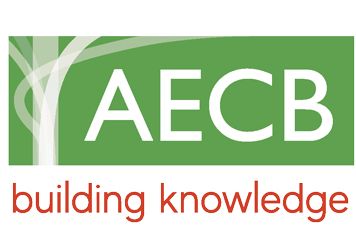- Design Approaches
- Posted
Convergence

Tom Woolley, Professor of Architecture at Queens University Belfast and Editor of the Green Building Handbook, draws attention to the recent event which demonstrated the potential and importance of sustainable building in Ireland.An important seminar will be held as part of the Convergence Festival in Temple Bar Dublin on Saturday May 24. This will be an opportunity to hear from a range of exponents of the art of sustainable building and about current work in Ireland.
Not enough is being done in Ireland to meet targets for the reduction of carbon emissions. Fossil fuel energy is likely to get more expensive as supplies run out, and many people are confronted with the prospect of incinerators on their door step as local authorities fail to deal adequately with waste disposal. These are the issues, along with pollution of rivers and the sea, that tend to hit the headlines, and we hear a lot about the need for renewable energy to solve these problems.
What is often overlooked is that buildings and the construction industry have a much bigger negative impact on the environment. Much of the pollution is caused by the manufacture of building products, and nearly half of landfill rubbish comes off building sites. Most buildings, even new ones, are so poorly insulated that we might as well hang a two bar electric fire on the outside of our houses. Despite efforts to tackle the situation by improving building regulations and talk of best practice in the construction industry, very little is being done.
But even where buildings are insulated better, the industry is using fossil fuel based insulation materials like polystyrene and polyurethane. Fibre based insulation products also present health risks. The demand for non-renewable resources from a voracious building industry also creates environmental problems, and much of the timber we use is imported from half way round the world and is not from properly certified sustainable sources.
The alternative to this approach involves radical changes in practice. It involves using renewable materials that can be grown and replaced, it involves thinking about the design of buildings in a way that can avoid both negative upstream and downstream environmental impacts and protects the health of building occupants. The Convergence event will give you an insight into this alternative approach to building and is one of a series of annual events that brings together the experts in the green approach to building.

For many cynics, building with hemp or earth or straw is seen as a fringe, slightly wacky approach, which has no relevance to the mainstream construction industry. Yet in countries like the USA, cob and earth building is now carried out on an industrial scale. Straw bale building receives government backing, as straw bale buildings in California are fully recognised by the building codes and provide a low energy seismic-safe higher standard of building than conventional alternatives. But also green building methods require good designers who will produce beautiful buildings which are based on holistic concepts of architecture. David Pearson, author of the highly influential Natural House book will set the tone and Mike Haslam of Eco-Arc will show how such an approach to design is taking root in Ireland. Finally Edward Harland will emphasise how the ecological approach is just as important in work to existing buildings and how this is where the real challenge lies if we are to improve our environment.
Over the last few years there has been an upsurge in demand for buildings with higher environmental standards and a slow growth in architects and builders who can respond to such a demand. Unfortunately there are still not enough and developers and public bodies have failed to take green design seriously. This is unlikely to change without a well organised body which can bring together the exponents of green building and design. Such a body can maintain a directory and a web site and provide an information service to the general public. It can bring together practitioners and put them in touch with each other for mutual support. It can also provide training and set certain basic standards of competence. This is the sort of work being done by the Association of Environment Conscious Builders (AECB) in England but we do not have a similar body on the island of Ireland. There are a handfull of AECB members here but they are scattered about and rarely meet. Perhaps the Convergence event will help to stimulate the development of an AECB Ireland and I would be keen to hear from anyone who would like to be involved.
There are enough businesses now manufacturing and selling eco materials in Ireland. There are a range of practitioners from enthusiastic amateurs to well qualified architects and engineers, all of whom have a contribution to make. There are even some green builders, but not many, judging from my weekly post bag of desperate pleas from people all over Ireland looking for someone to help them achieve their green visions.
The AECB in England is now working with mainstream bodies like the Construction Industry Training Board so that courses are available in local colleges to teach green building methods such as earth building and plastering, and promoting a simple understanding of how to make a building more energy efficient. We need to develop something similar in Ireland. With the right efforts, such work would get support of Government and local authorities and a more environmentally responsible approach to building would be accessible to all.
For information on the AECB look at www.aecb.net
For information on eco building in the USA look at
www.ecobuildnetwork.org
To contact Tom Woolley email This email address is being protected from spambots. You need JavaScript enabled to view it.
Over the last few years there has been an upsurge in demand for buildings with higher environmental standards and a slow growth in architects and builders who can respond to such a demand. Unfortunately there are still not enough and developers and public bodies have failed to take green design seriously. This is unlikely to change without a well organised body which can bring together the exponents of green building and design. Such a body can maintain a directory and a web site and provide an information service to the general public. It can bring together practitioners and put them in touch with each other for mutual support. It can also provide training and set certain basic standards of competence. This is the sort of work being done by the Association of Environment Conscious Builders (AECB) in England but we do not have a similar body on the island of Ireland. There are a handfull of AECB members here but they are scattered about and rarely meet. Perhaps the Convergence event will help to stimulate the development of an AECB Ireland and I would be keen to hear from anyone who would like to be involved.
There are enough businesses now manufacturing and selling eco materials in Ireland. There are a range of practitioners from enthusiastic amateurs to well qualified architects and engineers, all of whom have a contribution to make. There are even some green builders, but not many, judging from my weekly post bag of desperate pleas from people all over Ireland looking for someone to help them achieve their green visions.
The AECB in England is now working with mainstream bodies like the Construction Industry Training Board so that courses are available in local colleges to teach green building methods such as earth building and plastering, and promoting a simple understanding of how to make a building more energy efficient. We need to develop something similar in Ireland. With the right efforts, such work would get support of Government and local authorities and a more environmentally responsible approach to building would be accessible to all.
For information on the AECB look at www.aecb.net
For information on eco building in the USA look at
www.ecobuildnetwork.org
To contact Tom Woolley email This email address is being protected from spambots. You need JavaScript enabled to view it.
- convergence
- Tom Woolley
- Queens University
- Green Building Handbook
- fossil fuels
- polyurethane
- hemp
- straw bale
- easca
Related items
-
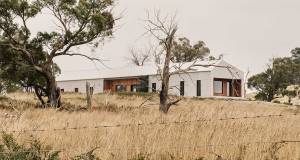 Big picture - Huff'n'Puff Haus - a straw bale passive house
Big picture - Huff'n'Puff Haus - a straw bale passive house -
 Grant invests in biofuel tech for oil boilers
Grant invests in biofuel tech for oil boilers -
 Oil heating sector pivots to biofuels, but green groups raise concern
Oil heating sector pivots to biofuels, but green groups raise concern -
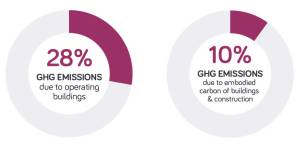 Architects call for urgent climate action ahead of COP 26
Architects call for urgent climate action ahead of COP 26 -
 New research finds air pollution particles in human placentas
New research finds air pollution particles in human placentas -
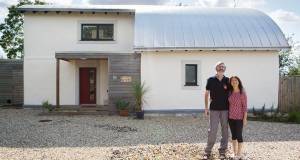 All bales, no bills
All bales, no bills -
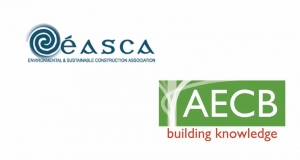 UK & Irish green building associations set to merge
UK & Irish green building associations set to merge -
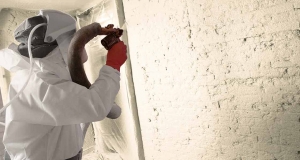 ECON Polyurethanes launch new, greener spray-foam insulation
ECON Polyurethanes launch new, greener spray-foam insulation -
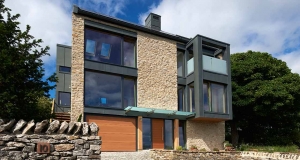 Timber & Straw passive house is a world first
Timber & Straw passive house is a world first -
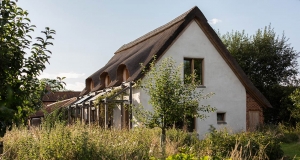 Norfolk straw-bale cottage aims for passive
Norfolk straw-bale cottage aims for passive -
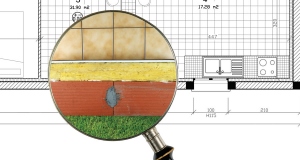 Material impacts
Material impacts -
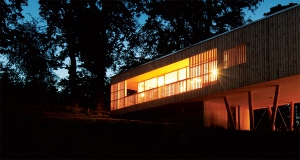 International - issue 6
International - issue 6


